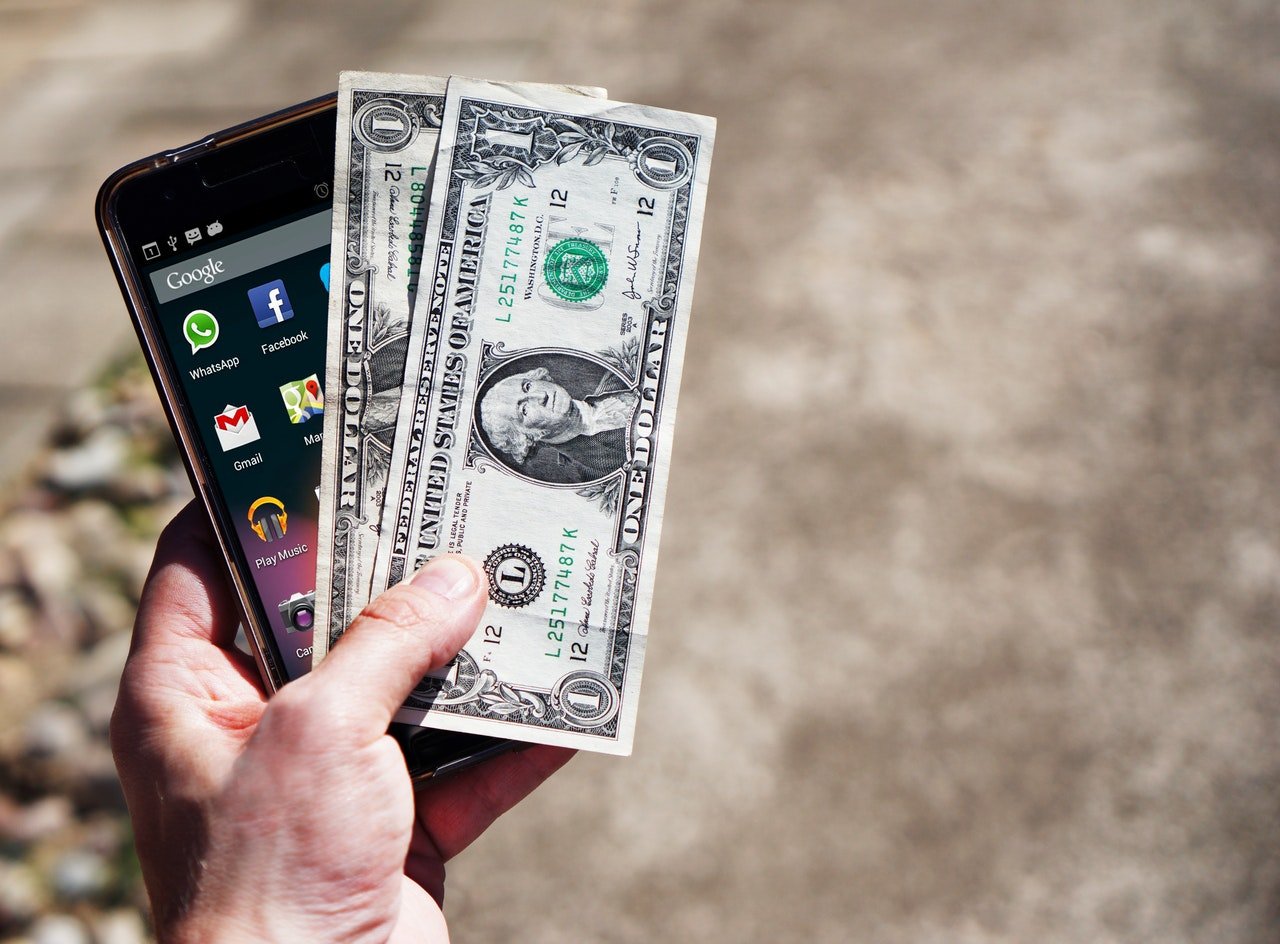Better User Experience = Better Discoverability
These days numerous organizations state the significance of viable UX by investing time and money in it. However, what makes them suppose so? It’s...


When you own a mobile application, odds are you've invested a lot of time endeavoring to see how to drive income. Your users are rushing to mobile. However, the cash isn't yet following. The most straightforward path for the company to legitimize the budget needed for the development of a mobile application and management is to attach it to income. However, that is not easy to be done.
In case that mobile is the place your clients are connecting with your brand the most, it is imprudent to effectively abstain from putting resources into the mobile platform as the team does not view the ROI in dollars.
As per Statista, global mobile app revenue will amount around $190 billion by 2020. What's more, there is a flip side of a coin – most people won't use paid apps when there are free ones.
Envision the strong competition among free applications, and you will understand that your odds of hopping into the market with a paid one is thin to practically none. Obviously, you then need to search for different methods to monetize your applications.
Before knowing the right strategies first, we need you to understand your target audience. So, the initial move towards the monetization of your application is knowing the answers to a couple of queries like -
Some approaches permit application developers to start earning in a couple of days, while there are different techniques that initially carry users to the application and increment the number of app downloads. A while later, they center around creating incomes. It is fundamental to remember that even before your application releases in the App stores, the app monetization model ought to be created in the application.
So, how about we take a look at the best app monetization strategies and models to recognize how we can profit from it.
In case that you choose to keep your application free for download yet at the same time search for techniques of earning revenue with it, have a go at executing in-app purchases. They are a mainstream strategy for app monetization, both for Android and iOS.
This strategy is based on the system of the app being usually free; however, offering extra features to buy.
In-app purchase is amongst the most broadly utilized application monetization techniques in mobile gaming where you can pay real cash to buy specific points. For instance, in certain games, each time you have utilized your last life, you’re offered to purchase instant more lives instead of waiting for some time for new lives to restore.
In some games, you might be asked to pay for getting access to new levels or for uncommon things which can't be acquired in a free version of the game.
Concerning both premium and free variants, you can allow hiding ads when using in-app purchases, either for a specific timeframe or forever.
Putting local ads within the application is also one of the favored ideas of mobile application monetization. It’s because they cause minimal interruption to the clients.
These promotions are blended smartly with the app visuals or different components, making sure that any of the commercials don't stop the application performance or any of its procedure. For consistent user experience, it is vital to design and build up the mobile application in like manner. Also, rendering advantages like improved click-through rate and easy visibility, local ads are very versatile to an application.
Also known as full-screen ads, are either videos or pictures that show up amid transitions in an application such as when you go to the following level in a game. Despite the fact that interstitial ads normally appear regular transition points, they can at present be truly disturbing, since users need to watch them till the last to keep utilizing the application.
In any case, this sort of promotion has a more grounded click-through rate than any other.
In-app advertising ought to be charming and not interfere with the user experience. That’s the reason it's vital for an application company to search for an ad network that teams up with trusted brands, supports interactive ads, and makes use of smart advertisement targeting.
Google's AdMob is likely a standout network. It gives various helpful SDKs which make it workable for app developers to activate in-app ads for various platforms, including Android, iOS, and Unity. The network additionally makes it likely to cover further markets by altering advertisement content for the present location of the user; this component covers over 200 markets.
Additionally, AdMob gives a smart investigation and reporting trait to let companies settle on informed choices dependent on performance insights. Mobile developers can likewise effectively integrate AdMob with Google Analytics to get much more details into their users' interactions with advertisements.
The worldwide market for virtual merchandise - running from avatars, stickers, and coins to weapons, potions, and advanced levels - is vast.
On a fundamental level, any electronic merchandise can fill in as a conceivably monetizable virtual good, with video games like Farmville, Angry Birds etc likely being the most well-known variety by a long shot.
The ultra-prevalent Pokémon Go also provides users the facility to purchase a wide range of virtual goods, like "PokéCoins."
A standout and amongst the most well-known strategies to gain an income out of your application is through a freemium app model. Freemium applications cost nothing to download, yet they regularly incorporate in-app purchases which generate money for the vendor.
In this, a user base is made first by the free form of the application. After that, they can upgrade to the premium version of the app if the application prevails to intrigue them and get their attention.
Apps like MailChimp, Evernote, and Dropbox have applied this strategy favorably.
A simple invite to download the application is sent to the target audience. Since the application is allowed to download for free, users wouldn't fret out to attempt if it interests them. Further, after the users try the app, they can settle on an informed choice about jumping to its premium model. It implies users trust your application and now they are outfitted to pay for it.
This monetization technique is like the freemium app model. The thing that differs them is that a subscription app model offers paid content. Buyers download the application for nothing, yet with the limited amount of content (be it news, music, and so on.) before being urged to purchase in.
Under this monetization strategy, users are approached to pay a repetitive fee either for the utilization of the application completely or for specific features. More often, the charge is relatively low to drive users to pay.
News publications and magazines have since a long time ago worked under such a model, which is the reason it's mainstream with the semblance of The Wall Street Journal and The New York Times.
Applications that function admirably with the paid download model and the freemium model can make subscription model work as well, as comparable pay-to-play usage is being suggested.
Right now, this methodology is encountering an expanding interest.
This model will be your best decision when -
Presently, the subscription monetization strategy is getting increasingly intricate. Most proprietors set up a few pricing ranges with a wide range of features, that encourages them to induce clients to buy into a lower level of membership.
Here's some additional steps you can take to make your monetization strategy better and earn more revenue from your app
One more positive step to convert infrequent and new users into permanent, paying users is always to update the content on your app.
In this way, users have a valid reason for returning to your app for more. When there is a consistent flow of new content, even non-paying clients will more probably become customers.
AppAnnie, Localytics, Countly, GameAnalytics, are only a few of the numerous application analytics tools accessible in the market for app developers to select as per their objectives.
These tools can divide your users dependent on their in-app action and help you dispatch predictive and targeted marketing efforts. From understanding various advertisement layouts, setting price targets to overseeing placements, these devices help app developers develop their company by empowering better ROI.
An application can be a great wellspring of revenue for any company. As an application developer, you ought to make sense of the strategy that would be accustomed to making incomes through the application. The selection of monetization strategy is genuinely reliable on your nature of the business, your target users, what you require the app to offer, and so forth. The deal is reaching up to the soundest monetization approach.
Need help with your mobile apps? Get in touch with us

These days numerous organizations state the significance of viable UX by investing time and money in it. However, what makes them suppose so? It’s...

Technologies are now becoming the boom to the future and companies are looking forward to it with open arms. It has managed to take it all to a new...